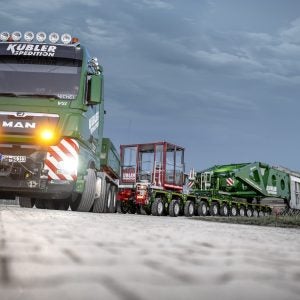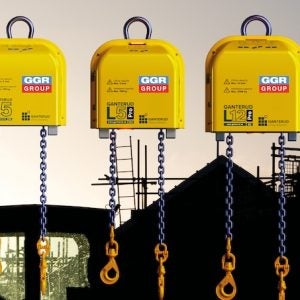Long lead-in times between ordering a crane and its delivery characterised the pre-2008 market for new cranes, often encouraging firms to opt for extensive repairs or remanufacture of existing cranes instead to maximise a fleet’s in-service time.
Delivery times have since improved, but high fleet utilisation rates are more important now than ever in the current highly competitive market, where any downtime can seriously affect a company’s ability to win contracts and complete them to schedule.
Just one or two cranes out of action for a few weeks can severely affect a company’s bottom line, even – as some suggest – with the beginnings of a recovery for the construction industry underway.
And with used cranes fetching lower prices since the downturn, while new crane prices have been less severely affected, many rental firms are unable to justify updating their fleet in these market conditions.
As a result, companies working in the repair and manufacture sector are seeing increased levels of demand as rental companies shy away from new acquisitions and attempt to extend the working life of their existing fleet.
One such remanufacturer is Dutch firm Avezaat cranes. Based in Rotterdam’s port area, Avezaat has performed remanufacturing and repair work on cranes for an international customer base since 1939.
Avezaat’s manager of new builds and repair, Bert Avezaat, has experienced the effects of the changing market on the sector.
“What you see now is that the delivery times of cranes are much shorter, so now you have to be really cost-effective,” comments Avezaat.
“But people are waiting to invest in new cranes for two reasons: Because they don’t need more cranes, there is crane capacity enough in the market, and because the prices of used cranes are a little bit lower.
“It’s much easier to buy new equipment if the value of your used crane is very high. Too much difference between the value of a new crane and their existing crane makes it very easy for people to decide to work for a little bit longer with their crane, so that’s a good thing for our kind of company.”
Indeed this difference between new and used crane values has long been the main determinant of how investment in a rental company’s fleet is used, and has always played a part in the initial stage of a crane repair and remanufacture company’s quotation process.
US crane accident repair and restoration firm Wheco’s vice president and director of business development, Jay Shiffler, explains Wheco’s estimation process.
“The first thing we will do is look at it and ask what is the cash value of that machine, what is the replacement cost? We’ll go in and do a scope of work to put it back into pre-accident condition. Then we benchmark the replacement cost against the repair cost, is it more cost effective to replace the crane or is it more cost effective to repair it?
“Those cranes are so expensive to buy it takes a lot before you want to throw that crane away.”
Wheco is another firm that has enjoyed improved business of late, with a steadily increasing workload for its Service Life Extension Programmes (SLEP).
Although remanufacturing work through the firm’s SLEP programmes accounts for the bulk of Wheco’s business, the firm, like Avezaat, prides itself on the ability to carry out repairs to any part of the crane quickly, and in a cost-effective manner.
Shiffler explains: “For example we did a repair on a GMK boom, multiple sections were damaged. We thought it was more cost-effective to replace them, so we ordered them from the manufacturer.
“We were able to get two sections, but the third section had an extremely long leadtime, so while it was more expensive to us to repair the boom, we went ahead and repaired it so that we could get the customer back into revenue generating service.”
Shiffler believes that taking this kind of approach with a focus on reducing customer downtime as well as costs is part of the reason for Wheco’s popularity in the US and abroad.
“A lot of the time the manufacturers say ‘we don’t know how to deal with that, we recommend that you replace it’ if a guy puts a small dent or a ding into the base section of a hydraulic form boom.
“On a 250t all-terrain crane, it’s very expensive to replace that.”
Wheco president Dave Wood agrees with this view, adding: “The manufacturers make money selling parts so that’s what they want to do. Every now and then they do need us, but they think we compete with their dealers.
“We really don’t, we work with a lot of their dealers. The sad part is that we are probably more of an asset to them if they would just look at the big picture. We’re probably one of the biggest OEM parts consumers of Grove parts. I know for the dealerships in our area we are we’re their number one customer because of the amount of parts we buy.”
However some manufacturers are prepared to help customers remanufacture cranes. Manitowoc Cranes’ EnCORE division focusses on these services.
EnCORE is Manitowoc’s rebuild, repair, remanufacture and exchange programme, separate from its parts sales operation.
It has recently launched the EnCORE Partners programme, which provides appointed Manitowoc crane dealers the tools and training to offer repair and remanufacturing services under the EnCore brand.
Newly appointed EnCORE Americas director Giberto Ferreira explains: “Normally we work to 60% of the value of a new crane, the remanufactured crane, after certification and rework, should be between 60% to 70% of the value of a new crane.
“But today that depends a lot on the model of the crane and the market situation. With the [global financial] crisis, there are some cranes that aren’t really worth the investment and other cranes that are worth spending more money than that.”
Giberto Ferreira says the company’s move to make this service more easily available through its distributors is indicative of Manitowoc’s high level of focus on the sector compared to other manufacturers in the Americas region.
“I think Manitowoc is one of the first manufacturers to attack this type of business with a real business case, at least compared to our competition anywhere in the Americas. Not everyone tends to focus on that, and there are other manufacturers that don’t want to pursue these remanufacturing capabilities.”
Manufacturers like Manitowoc paying more attention to this sector of the aftersales market will clearly be welcomed by their customers.
With better lead-in times than can often be expected when ordering older, less readily available replacement parts; more remanufacturing workshops capable of fabricating these components could be a boon for crane hire firms struggling to keep utilisation rates high.
Also, obviating the need for workforce training on new machines and the purchase of additional accessories solely to maintain a new crane’s resale value works to reduce running costs.
Perhaps surprisingly, Avezaat believes the increased involvement of manufacturers will be a broadly positive development, not just for the customers but for independent remanufacture and repair specialists too.
Avezaat says: “There’s a positive and a less positive side of these developments: “Of course you have a little bit more competition on one side because the manufacturers are concentrating a bit more on the repair and maintenance possibilities. To be honest we should be competitive compared to the big manufacturers because we are a smaller company and much more flexible. There is a big market out there, and about 60% or more of our turnover comes from across the border.
“But on the other hand, because the manufacturers are doing more repair work, the good thing is that we don’t have to put much energy into convincing the customers that it is safe.”
Avezaat explains that in the past, he has had to have lengthy discussions with some clients, especially outside of western Europe, to explain that a remanufactured or repaired crane can be just as safe as a new one if properly brought back to preaccident condition.
“Because the manufacturers claim you cannot repair it, it’s a total loss and you have to buy new – for very high prices most of the time – then we have to convince the customer that it is not beyond repair and that we can repair or rebuild it, and that there is no compromise to strength.”






